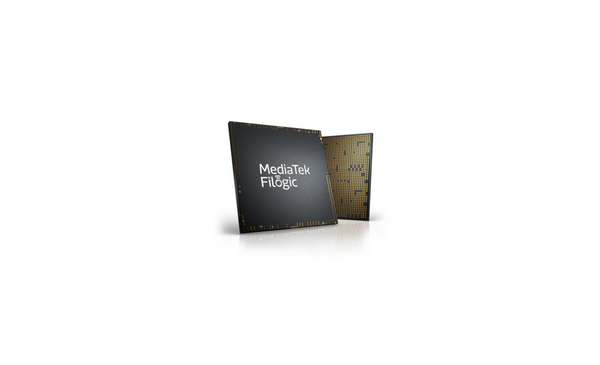In addition to discussing its Filogic 880 and Filogic 330 WiFi 7 solutions (announced in May 2023) at its most recent Executive Summit, MediaTek also provided live demonstrations of both the router and client sides. It is incredible that one of the demonstrations achieves a speed of 13Gbps between two WiFi 7 devices.
If you’re not aware with these two platforms, Filogic 330 is built into clients like laptops and Smart TVs, while Filogic 880 will power WiFi 7 in the router.
The technical prowess is nonetheless astounding and provides a glimpse of where consumer-level wireless networking is likely to go in the near future, despite the fact that these demonstrations are designed to demonstrate the best-case situations.
In this instance, a demonstration laptop had external antennae, and two WiFi-7 router units were nearby. The laptop example indicates that while it is not a real-world situation, the final WiFi 7 performance may be limited by the antenna design rather than the processor. This once again demonstrates that many problems with wireless networking also exist in the analogue world.
The highest potential bandwidth of the Filogic 880, which can connect to numerous WiFi 7 devices at once, is 36Gbps. Even for people with fast equipment, it is a daunting number. I still prefer cable Ethernet because of its dependability and minimal latency, but after seeing these demonstrations, I’m tempted to give wireless another go on my main PC.
Meaningful features of the Filogic 880 include a VPN accelerator (tunnelling offload engine) and a hardware cryptography engine. More individuals than ever before require these services as a result of the increase in work-from-home employment.
Filogic 880 has two 10Gbps wired Ethernet connections for the most demanding users, which might be quite useful for moving data between two workstations on the local network. That is supposing that such machines support 10 Gbps Ethernet, which is very rare without spending $100 to $300 on an adaptor. Although expensive, SMBs and power users would value the option.
All of this performance is made possible by some of the most cutting-edge radio and signal processing technology, including running multiple frequencies (MLO, Multiple Link Operation), supporting all WiFi bands, sophisticated beamforming, and highly parallel processing.
A client-side WiFi 7 chip called the Filogic 380 commonly communicates with a single router device, or mesh node, at a rate of up to 6.5 Gbps. It uses concurrent bands and channels to reach such speeds. It’s hard for me to see a situation in which WiFi 7 performance is limited by the chip rather than by the antenna configuration, the WiFi environment, or the router. It seems to be a wise long-term investment.
The introduction of WiFi Mesh networks, WiFi-6, and WiFi 6E over the last several years have revolutionised WiFi. With strong demonstrations from MediaTek, it seems like WiFi 7 development is doing nicely. This provides OEMs with a fantastic connectivity foundation upon which to develop, and it’s a fantastic incentive to utilise MediaTek as the whole platform (including SoC) rather than experimenting with other SoCs. CES 2023 will likely include further demonstrations and maybe product launches.

Subtly charming pop culture geek. Amateur analyst. Freelance tv buff. Coffee lover
